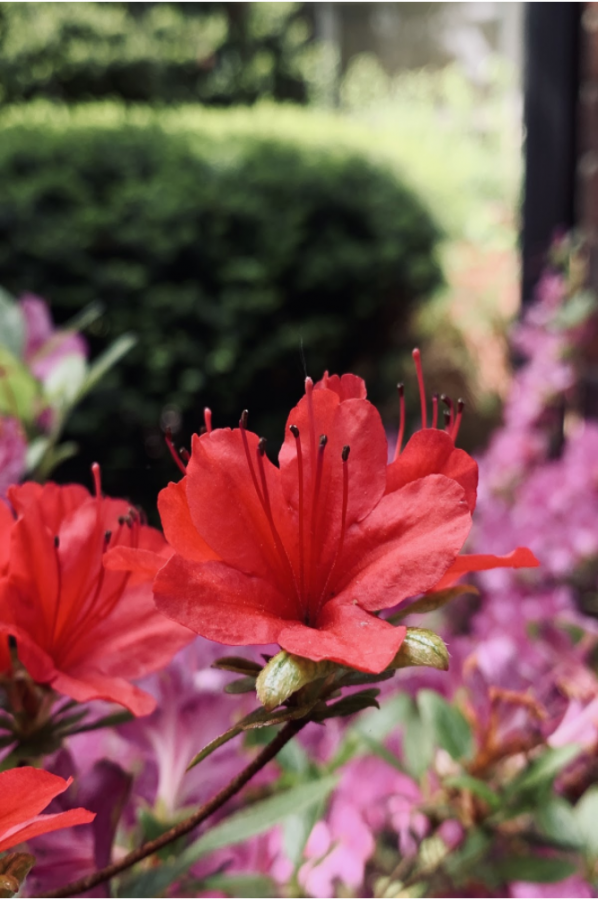The Deal With Murder Hornets
Why everyone should be worried
Local flowers, pollinated by honeybees that could be taken out by the new hornets.
In the midst of the pandemic, another troublesome concern has surfaced in the headlines: An invasive hornet has made its way to North America. What’s causing all of the commotion? They’re deadly- and could be devastating to honeybee populations.
These killer hornets were first seen in Washington state in December. However, a few months later, more were spotted in the area. Seth Truscott, communications coordinator at Washington State University’s college of agricultural, human, and natural resource sciences claims that “hornets are most destructive in the late summer and early fall when they are on the hunt for sources of protein to raise next year’s queens… [and] … they attack honey bee hives, killing adult bees.”
These massive insects, colloquially known as “murder hornets” can chop the heads off of bees, an essential part of the food system, to feed their young. Without the bees, there will be no source of pollination, which allows plants to reproduce. If plants cannot reproduce, the supply of food would drastically shrink. Not only do they kill a large part of our food system, but they can also do away with humans with a few stings.
Compared to a bumblebee, the sting of a murder hornet can be deadly. On the brighter side of things, it is deadly only when one is stung multiple times. It is generally rare to get stung by one, similar to an ordinary bee.
According to a CNN report, Chris Looney, an entomologist at the Washington State Department of Agriculture states: “If you happen to spot one in the future…don’t try to take them out yourself if you see them, if you get into them, run away… It is really important for us to know of every sighting if we’re going to have any hope of eradication.”
State officials are asking people in this area and other potential areas to be on high alert for these insects. While this may not be the biggest concern at the moment for individuals quarantining at home, it is still critical to think and prepare for the future. This may be another factor, though certainly not as big as COVID-19, that could have major impacts on our daily lives.






